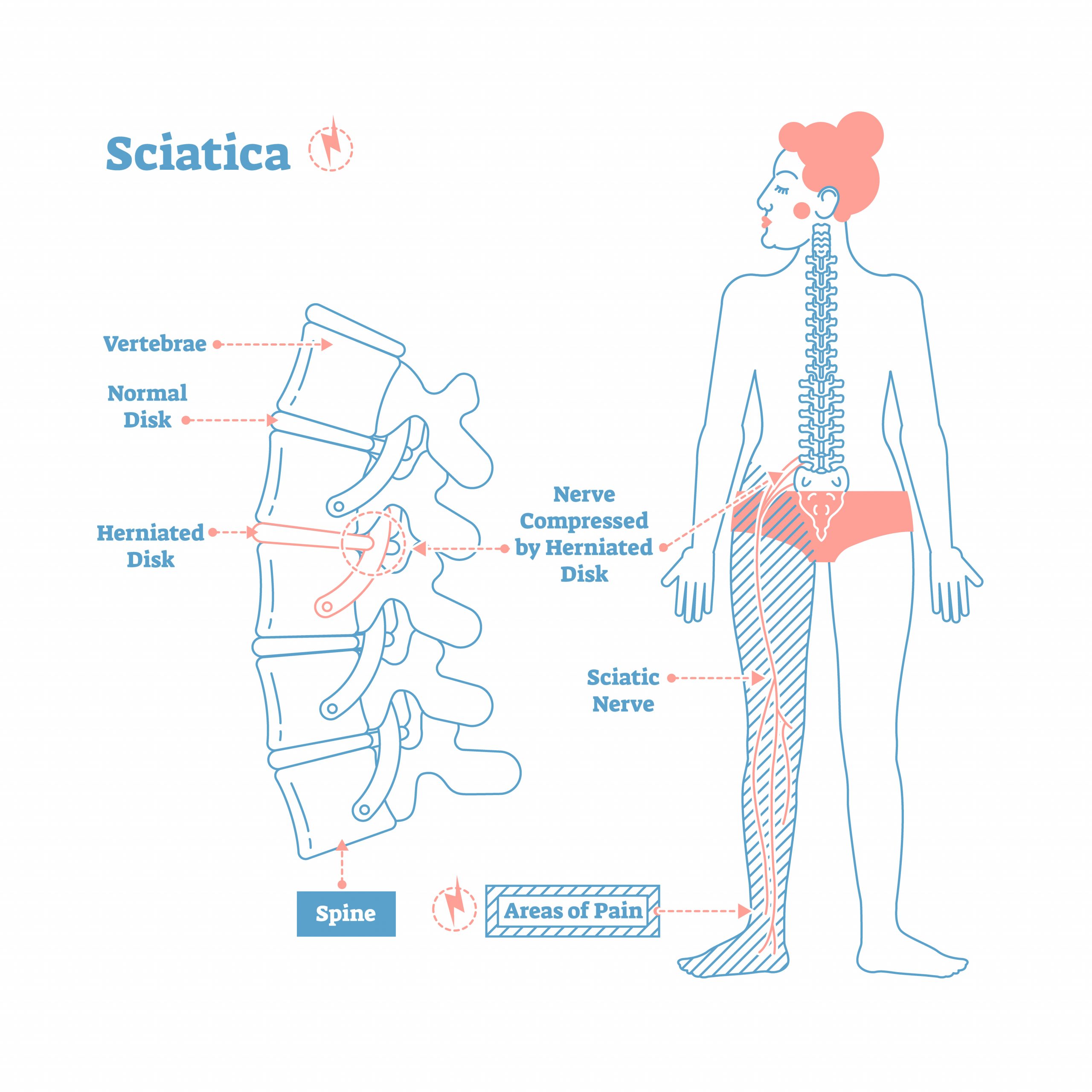
By Dr. Aaron Dutruch
These days, sciatica seems to be a bit of a catch all term for lower back pain. but from a medical standpoint, sciatica is a condition that typically presents as not only lower back pain, but pain, numbness or tingling that follows the path of the sciatic nerve. The sciatic nerve is the largest nerve in the human body and is comprised of 5 separate spinal nerves. This nerve controls most of the muscles and sensation for lower extremities, and symptoms can vary depending on where the nerve is being impacted. The main structures that can affect these nerves are the lumbar discs as well as the muscle and joints of the pelvis.

When a disc in the lower back is compressed, it can often put pressure onto a spinal nerve which is located nearby, this can cause symptoms to present further down the nerve. These symptoms could not only be pain in the lower back, but pain and numbness or tingling that extends as far as the foot. When this happens, it is usually on just one side of the body and the pain is described as deep ache or a burning sensation. If the pressure on the nerve continues, it can eventually lead to loss of strength and control of the leg.
Restrictions of the joints in the pelvis can cause pelvic instability, this instability causes the muscles in the lower back and gluteal region to tighten or spasm in compensation. The main muscles your body uses for pelvic stability are the gluteus medius, gluteus maximus, piriformis and to a lesser extent, the tensor fascia latae. If the piriformis goes into spasm or chronic tension, it can cause some of the same symptoms listed above (pain, numbness or tingling) because this muscle lays directly on top of the sciatic nerve.
Treatment should start conservatively but is dependent on the exact cause as well as the duration of the symptoms. When a patient comes into the office with these symptoms, we use a series of orthopedic tests and imaging to get an accurate diagnosis. If testing and imaging show disc involvement, I usually start with decompression. A decompression table is an amazing tool that is designed to help heal the discs and reduce pressure onto the nerves. If imaging or testing is negative for disc involvement, the treatment centers around reducing the muscular tension, specifically within the piriformis. We use a mix of manual therapy techniques, adjustments and stretches to help restore normal motion within the pelvis. If the symptoms continue with no changes or gets worse, I recommend consulting a neurologist to be proactive. As a general rule, when dealing with conditions caused by nerve compressions, the longer the pressure is on the nerve, the more likely it is to become permanent.
To recap: Sciatica is a condition that can cause lower back pain as well as symptoms into the legs. The cause helps to dictate the treatment, and with conservative care (chiropractic or physical therapy) most patients see significant results. But if symptoms continue, further consultation may be necessary. If you’ve been having some of these symptoms, even if its “on and off” find a Chiropractor or Physical therapist in your area to help get you back up and moving again. We’d love to help.
Dr. Aaron Dutruch D. C. received his BS in Kinesiology, Fitness and Human Performance from LSU and his Doctorate of Chiropractic from Texas Chiropractic College. He is proficient in Upper Cervical chiropractic care and is a certified FAKTR provider. Premier Chiropractic, 1120 N Causeway Blvd. Ste 2, Mandeville, (985) 674-5855, premierchiromandeville.com



